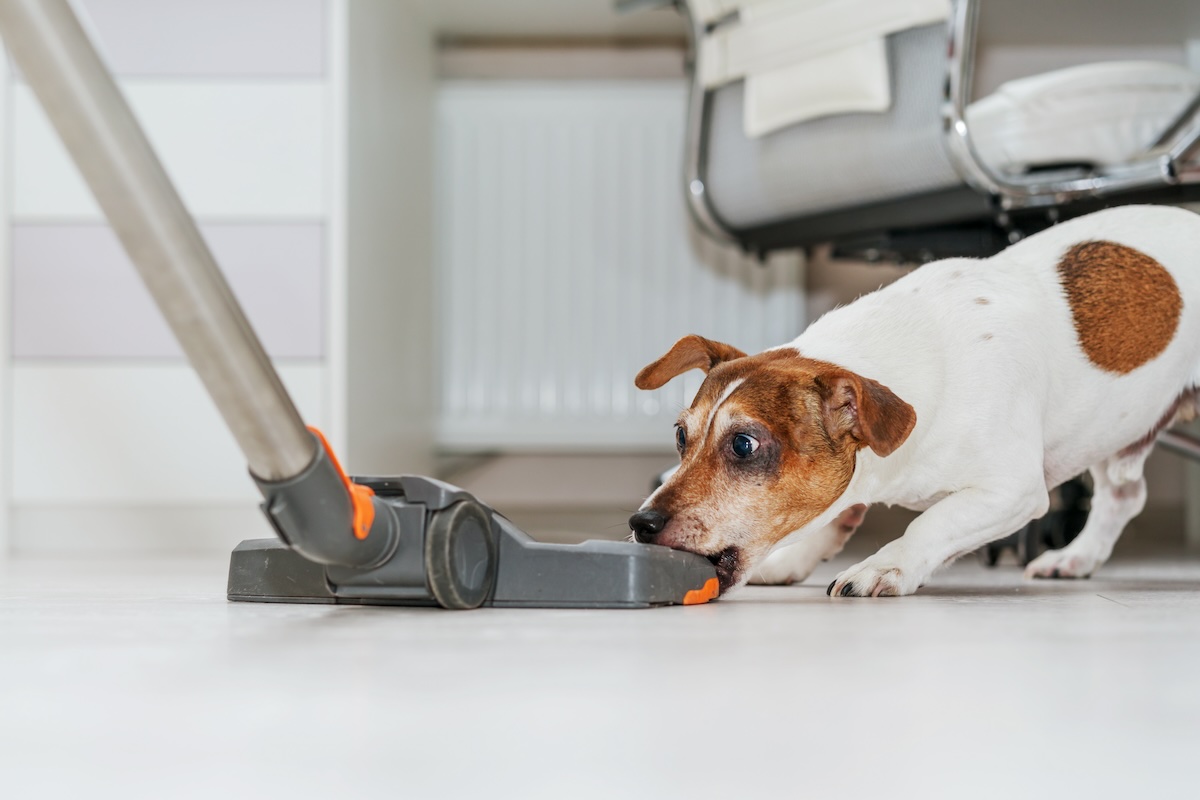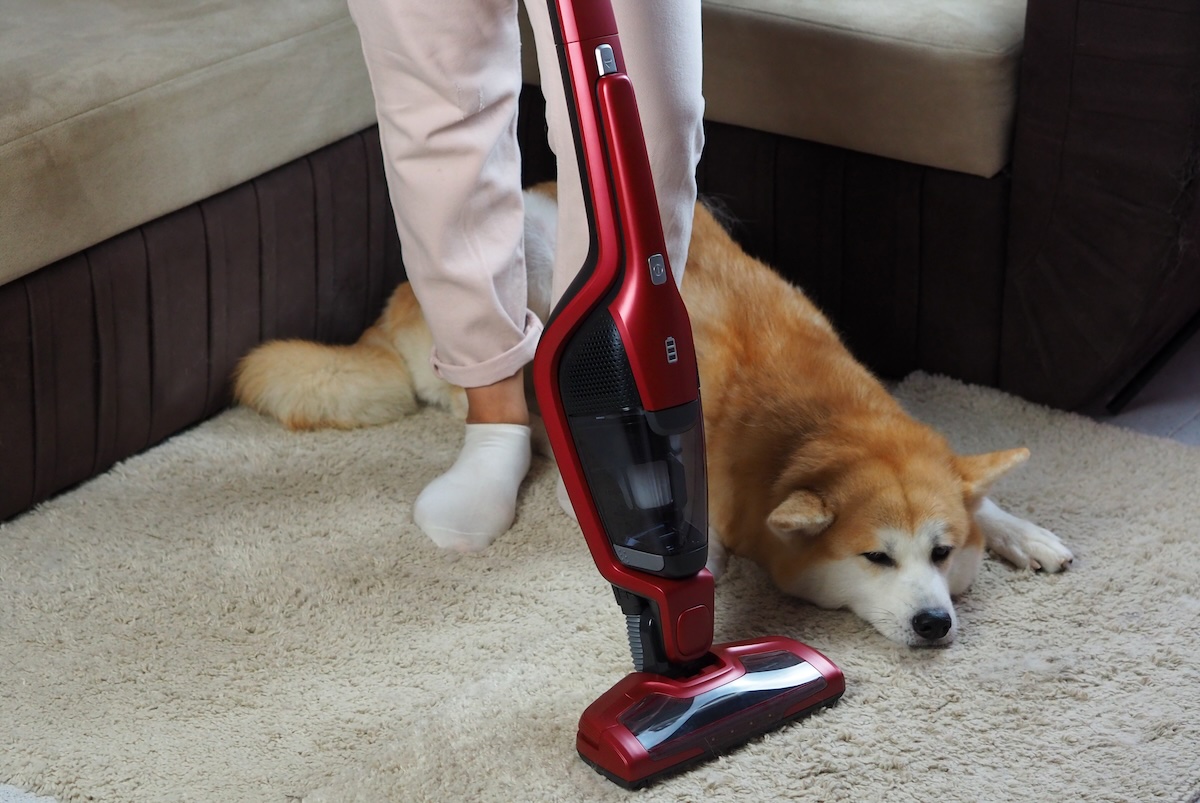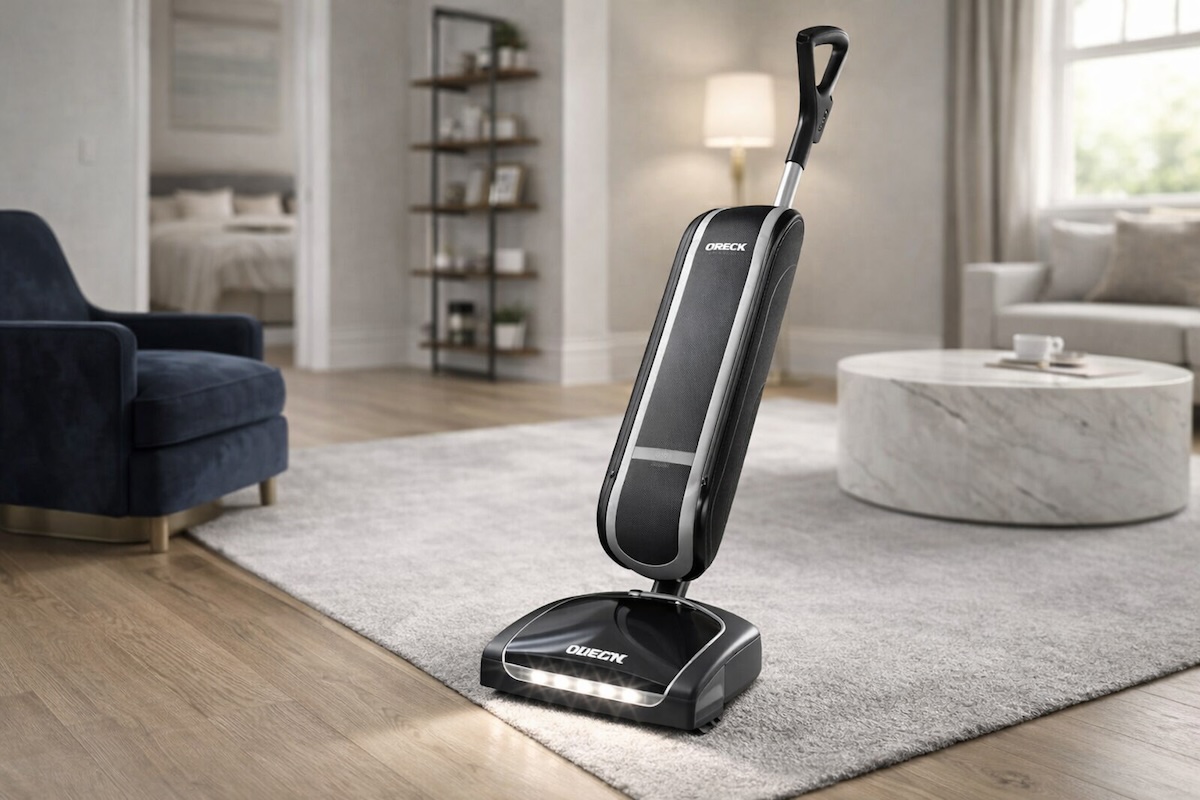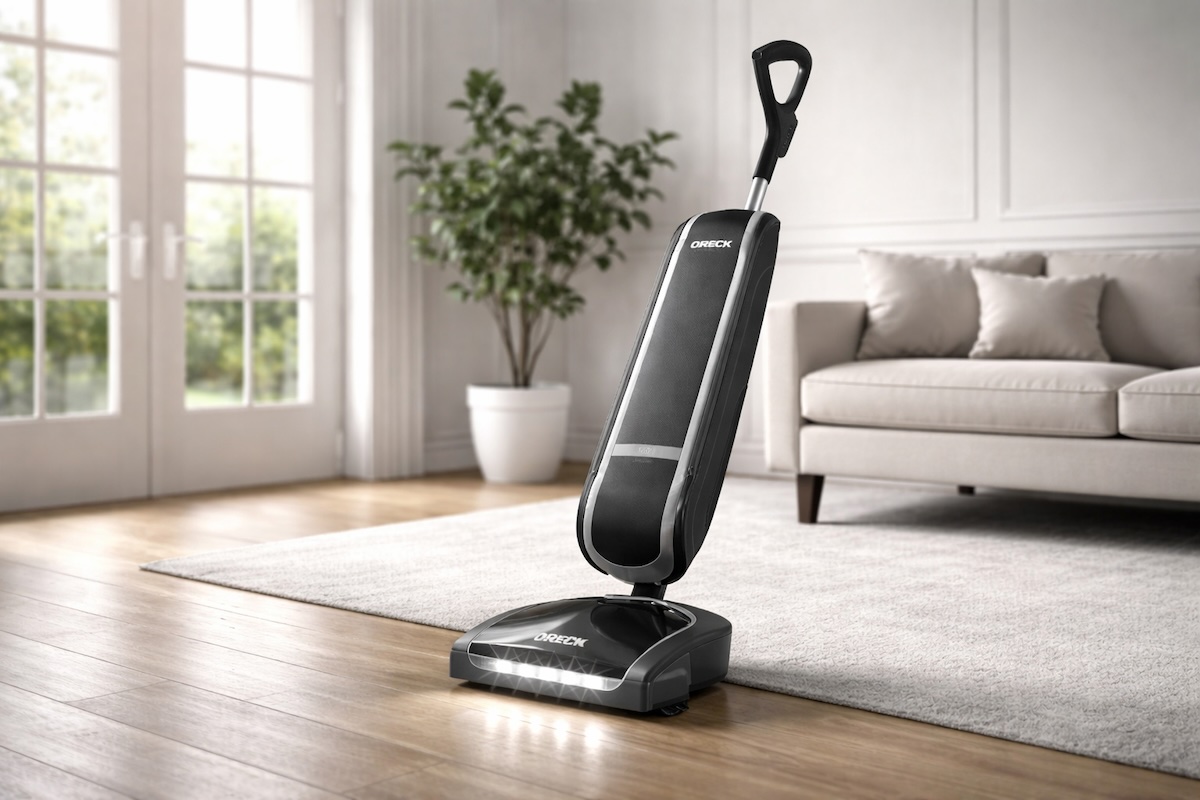Table of Contents
ToggleIntroduction: Why Vacuums Can Sound So Loud
Everyone recognizes the sound: the sudden roar of a vacuum cleaner firing up. In some homes, it’s background noise. In others, it feels like the machine is competing with your TV, your conversations, or your peace of mind. But why are vacuum cleaners so noisy? And more importantly, how do you know when the noise is normal and when it signals a maintenance or repair issue?
This article takes a closer look at what’s behind the decibels. We’ll take a quick look at how vacuum technology works, why certain parts generate more noise than others, what problems can make a machine grow louder over time, and how proper maintenance can quiet things down. Along the way, we’ll cover both the basics and the deeper questions people often have—from comparing canisters to uprights to understanding whether or not noise equals power.
The Science of Noise in Vacuum Cleaners
At its core, every vacuum cleaner is an air-moving machine. A motor drives a fan that spins at thousands of revolutions per minute, pulling air—and with it, dust, dirt, and allergens—into the machine. That air must then escape through exhaust vents, often rushing through filters before leaving the unit. All of these movements create sound.
Several elements combine to determine how loud a vacuum will be:
- Motor size and speed: A larger, faster motor generates more suction but also produces more vibration and a stronger hum.
- Airflow turbulence: As air rushes through narrow hoses, bends, and vents, it creates turbulence that amplifies noise.
- Resonance of materials: Lightweight plastics and thin housings vibrate more, while better-built machines use insulation or denser casings to dampen sound.
- Brush roll contact: On carpet, the rotating brush roll adds its own buzz and friction-based noise.
This is why two vacuums with the same suction power can sound dramatically different — design plays a major role.
Normal Noise vs. Problem Noise

Every vacuum will make some noise, but there’s a difference between expected operation and a signal that something’s wrong. Think of it like your car engine: a steady hum is fine, and some brands and models are naturally going to be louder than others. But a grinding or rattling means it’s time to look under the hood.
Normal operational sounds include:
- A steady motor hum or whir
- Airflow noise from the hose and vents
- A rolling, consistent brush noise on carpet
Noises that may indicate issues include:
- Sudden rattling, clanking, or grinding
- High-pitched squeals or screeches
- Louder-than-usual humming or whirring
- Rhythmic thumping or vibrating
Catching these early is important. A clogged hose, loose belt, or dirty filter left unchecked can put strain on the motor and shorten the life of the machine.
The Motor: The Primary Source of Vacuum Volume
The motor is the heart—and the loudest part—of any vacuum cleaner. It’s essentially a small electric engine, converting power into rapid fan motion. As it spins, it generates suction and heat, both of which need to be managed.
Noise levels vary widely depending on motor design. Entry-level vacuums often use simpler motors with less insulation, while premium models may feature dual-stage or insulated motors that reduce sound. Some even add acoustic foam inside the casing to absorb vibration.

But when a motor starts sounding different, like going from a smooth hum to a higher-pitched whine, that’s often a red flag. Worn bearings, dust buildup inside the housing, or a stretched belt can all change how the motor sounds before it fails.
Common Problems That Make Vacuums Louder
When a vacuum that once sounded normal suddenly seems louder, it’s usually not random. Several common issues can shift the way the machine runs and increase its volume.
Blockages in the Air Path
One of the most frequent culprits is a clog. Dirt, pet hair, or even small objects can lodge inside hoses or the main airway. As the motor struggles to pull air through a restricted path, the pitch of the vacuum changes. You might hear a higher-pitched whine or even a chugging noise. Clearing the hoses, wand, and baseplate often restores both airflow and normal sound levels.
Clogged or Overlooked Filters
Filters trap fine particles before they exit through the exhaust, but over time they can become overloaded. A dirty filter forces the motor to work harder, producing extra noise while reducing suction. Many filters are washable and reusable, while other filters need to be replaced on a schedule. Checking them regularly can keep both sound and performance steady.
Worn or Damaged Belts
Most upright and canister vacuums use a belt to spin the brush roller. When a belt stretches, slips, or frays, the machine often gets louder. A slipping belt can squeal, while a broken one may leave the motor spinning freely without moving the brush. Belts are inexpensive and easy to replace, making them a good first check if your vacuum suddenly sounds off.
Fan Assembly Issues
The fan that drives suction can accumulate dust on its blades. This throws the balance off, creating extra vibration and noise. In some models, the fan itself may crack or warp over time. If cleaning doesn’t help, replacing the fan assembly is often the best option to restore smooth, quiet function.
Brush Roll Bearings
A brush roll spins on bearings at either end. When those bearings dry out, wear down, or seize, they can produce a harsh grinding or screeching noise. Because brush rolls are under constant load, this is a common failure point. Replacing the brush or having it serviced by a professional vacuum cleaner repair shop is usually the solution.
How to Tell if the Noise is Fixable at Home
Not every sound means you need professional repair. Many noise-related problems can be addressed with basic maintenance:
- Clear hoses and passageways to remove clogs.
- Inspect and replace belts if they look stretched or worn.
- Clean or swap filters according to the manufacturer’s schedule.
- Remove string, hair, or debris from the brush roll to prevent drag.
- Empty bags or bins before they’re overfilled to reduce airflow strain.
If the noise is coming directly from the motor or bearings, though, professional servicing is the safer path. Running the machine while these parts are failing risks burning out the motor entirely.
Why Some Vacuums Are Louder or Quieter by Design
Not all vacuums are created with the same sound profile in mind. The way a machine is built has a big impact on how much noise it produces, even if the suction power is similar.
Upright vs. Canister Vacuums
Upright vacuums typically place the motor directly in the body of the machine, close to the floor. That means the sound projects outward without much insulation. Canister vacuums often house the motor inside a more enclosed casing, which can muffle the sound. This is why high-end canister vacuums are often marketed as “quiet” models, even while delivering powerful suction.
Budget Models vs. Premium Designs
Lower-cost vacuums usually rely on lighter plastic housings and simpler components. These materials are more prone to vibration and resonance, which translates to extra noise. High-end or luxury vacuum cleaners, so to speak, may incorporate acoustic padding, rubber seals, and reinforced housings that absorb some of the motor’s output before it reaches your ears.
Quieter Vacuum Cleaners
| Brand | Typical Noise Level | Standout Features |
|---|---|---|
| Miele | ~64–70 dB | German-engineered canisters with insulated motor casings, sealed HEPA filtration, and smooth airflow design for quiet but powerful cleaning. |
| SEBO | ~67–72 dB | Durable uprights and canisters used in hotels and professional cleaning; advanced filtration and brush engineering reduce vibration noise. |
| Electrolux | ~65–72 dB | Premium European canisters with insulated housings; designed for residential users who want quiet operation without sacrificing suction. |
| Bosch | ~64–70 dB | Select canisters engineered with airflow optimization and motor dampening; strong reputation for energy efficiency and lower sound output. |
| Riccar | ~65–72 dB | American-built uprights featuring Tandem Air technology, sealed HEPA systems, and reinforced housings that help cut down on motor and brush noise. |
Sound Insulation and Engineering Choices
Some manufacturers go a step further, designing their vacuums with specific noise-reduction features. Examples include insulated motor compartments, redesigned airflow paths that reduce turbulence, and brush rollers engineered to minimize vibration. These adjustments won’t make a vacuum silent, but they can reduce the decibel level enough to make daily cleaning less disruptive.
Decibel Levels: What Counts as Loud?
Vacuum cleaner noise is usually measured in decibels (dB). For context, a normal conversation hovers around 60 dB, while a lawn mower can reach 90 dB. Most standard vacuums fall in the 70–80 dB range. Machines designed for quiet operation sometimes dip into the mid-60s, while older or poorly maintained models can climb well into the 80s. That difference may not sound dramatic on paper, but every increase of 10 dB represents roughly a doubling of perceived loudness.
| Decibel Level (dB) | Comparable Sound | Vacuum Examples |
|---|---|---|
| 60–65 dB | Normal conversation, quiet office | Miele Complete C3, SEBO Airbelt canisters, premium Electrolux models |
| 66–70 dB | Busy restaurant, shower running | Bosch canisters, Riccar Tandem Air uprights, newer Dyson cordless models |
| 71–75 dB | Vacuum average, traffic inside a car | Dyson Ball Animal upright, Shark Navigator, mid-range Hoover uprights |
| 76–80 dB | Alarm clock, busy city street | Budget uprights, older Bissell and Eureka models |
| 81–85 dB | Gas-powered lawn mower | Heavy-duty shop vacs, worn or poorly maintained household vacuums |
| 86–90 dB | Motorcycle at close range | Industrial vacuums, very old uprights without insulation |
Does More Noise Mean More Power?
It’s a common belief that a louder vacuum equals stronger suction. While there’s some truth — a bigger motor does tend to make more noise — volume alone isn’t a reliable measure of performance. Two machines can produce the same noise level while delivering very different cleaning results. Factors like airflow design, brush efficiency, and filter quality matter just as much. A well-engineered vacuum can run quieter while outperforming a noisier competitor.
Maintenance Habits That Keep Vacuums Quieter
Noise often creeps up gradually, which is why ongoing maintenance makes such a difference. A few simple habits can extend the life of your vacuum and keep the sound from becoming unbearable.
Empty the Bag or Bin Before It’s Overfilled
When a vacuum bag is two-thirds full, or when a dust bin reaches about half to three-quarters capacity, airflow begins to suffer. Straining the motor in this way raises the noise level and weakens suction. Regularly emptying the collection system or swapping in a compatible/OEM replacement vacuum cleaner bag is one of the easiest ways to reduce stress on the machine.
Keep Filters Clean and on Schedule
Filters should be inspected before each use. Washable filters need to be rinsed and dried thoroughly, while disposable filters should be swapped out according to manufacturer guidelines. A clogged filter can make the motor work twice as hard, which usually means twice the volume.
Inspect the Brush Roller and Belt
Strings, hair, and carpet fibers often wrap around the brush roller. Left unchecked, this debris creates drag and adds a low, uneven rumble. Belts should also be checked for fraying or stretching. Replacing a belt isn’t quite as simple as replacing a vacuum cleaner bag, but a low-cost fix that can instantly quiet a noisy roller system.
Check Hoses and Air Passages
Even small obstructions inside hoses can create whistling or high-pitched squeals. Run a broom handle or vacuum wand through detachable hoses to ensure nothing is lodged inside. Clear air paths translate directly to smoother airflow and less turbulence noise.
Schedule Professional Service When Needed
If you notice grinding bearings, a persistent squeal, or motor sounds that don’t improve with basic upkeep, professional servicing is the safest bet. A technician at a local vacuum repair shop can replace worn bearings, repair fans, or reseal the motor housing—repairs that aren’t practical for most homeowners.
The Bottom Line on Noisy Vacuums

Vacuum cleaners are never silent, but the difference between acceptable noise and a disruptive roar usually comes down to design and maintenance. Uprights tend to be louder than canisters, budget models vibrate more than premium ones, and every machine gets noisier when filters, belts, or brush rolls are neglected.
Understanding what causes the noise not only helps you decide when a sound is normal but also when it signals a problem that needs attention. With consistent care — emptying bins before they overflow, keeping filters fresh, checking belts, and clearing clogs — most vacuums can run at a comfortable sound level for years. And when unusual noises persist, turning to a repair professional can extend the life of your machine rather than replacing it prematurely.





